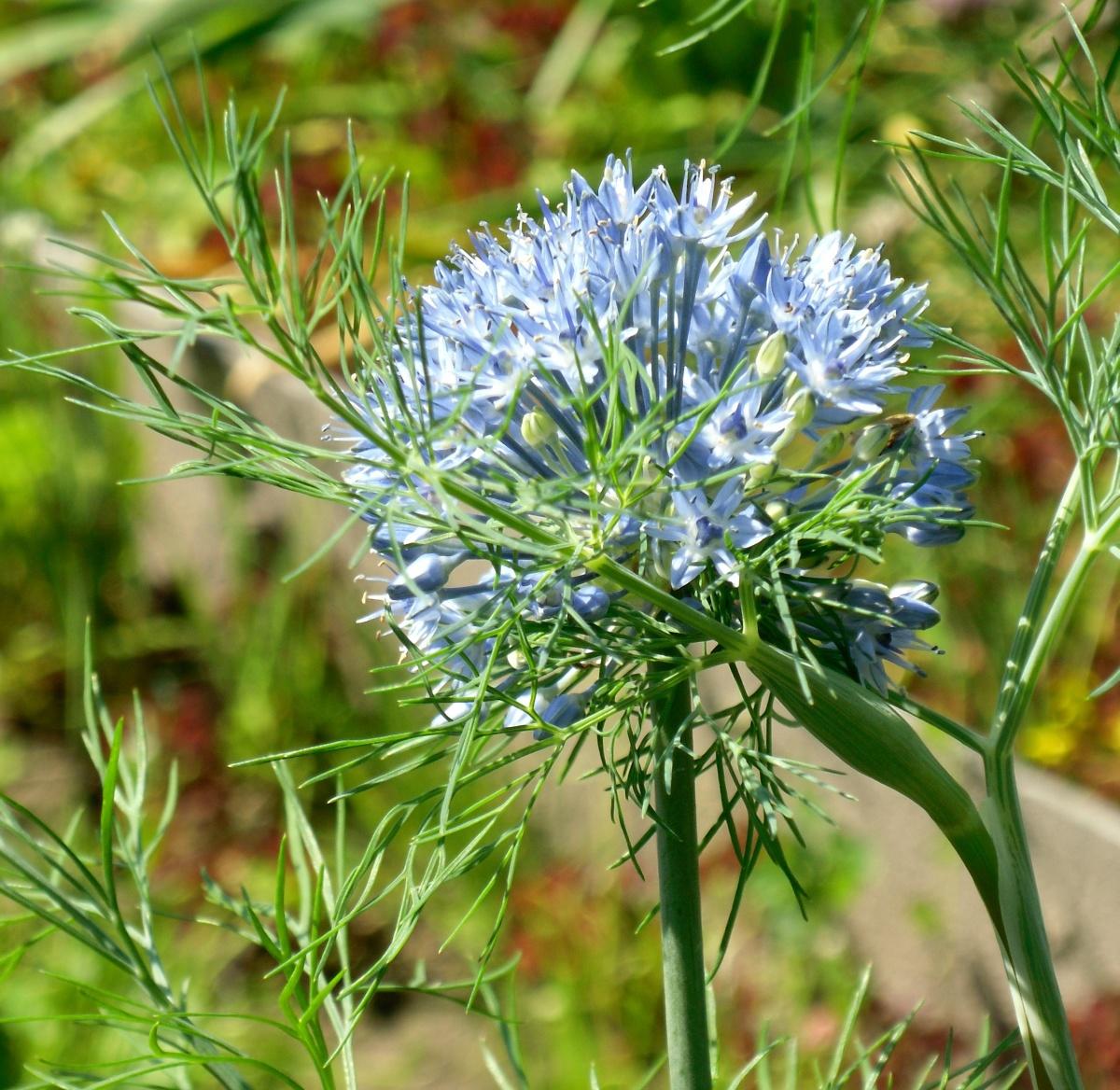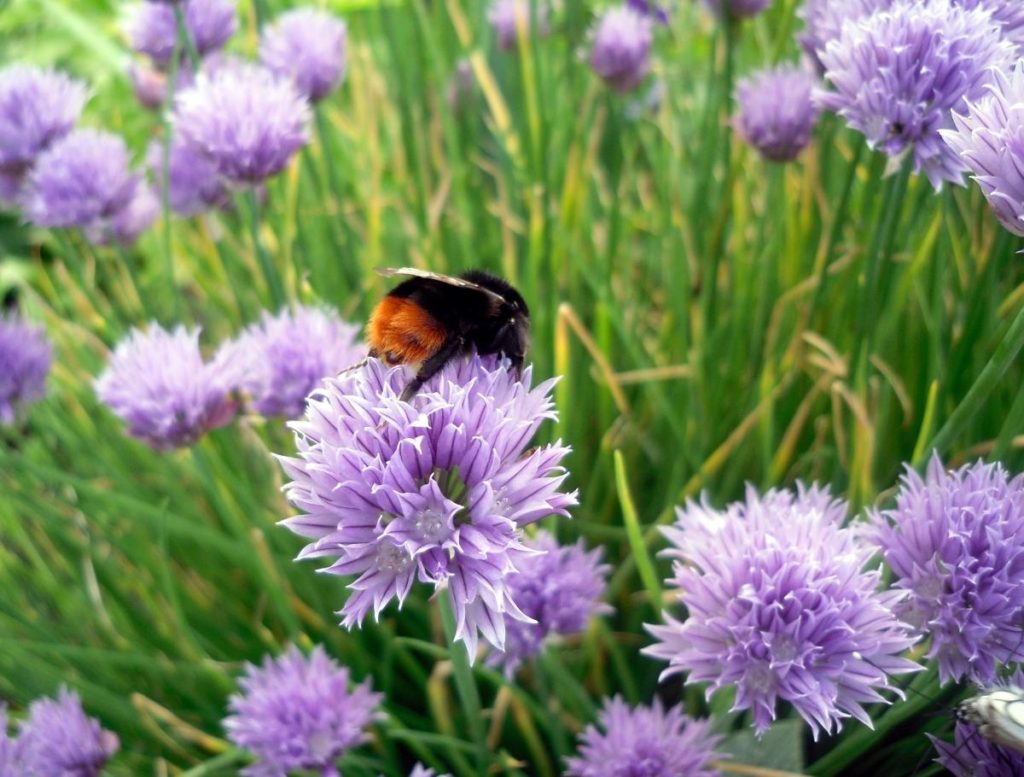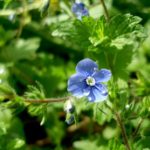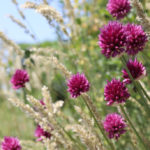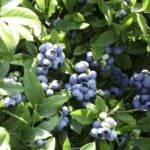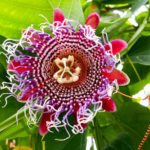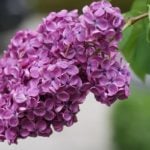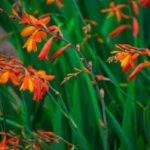For several years, I pursued the idea of creating a flower garden of decorative onions (Allium). It all started with a chance acquaintance with these plants, and when I found out how diverse the world of Allium is, I literally lost my peace, and then, last fall, in a new garden, I realized my idea. And while I wait for the snow to come down and start seeing the results of this work, I will tell you a little about the types that live in my garden and in the garden for a long time.
The absolute favorite is chives. It is a source of early greenery. The young feather is very tasty, almost without bitterness. But if the onion is regularly cut and well watered, then the crops can be removed literally from snow to snow. And even in winter: this plant is very susceptible to distillation at home. You only need to store a few pots for planting if you want the greens to be all winter: at home, the chives will only last for two harvests, after which he must again give the rest for spring planting back to the garden.
It is also a versatile ornamental plant. It can be planted with shrubs, a strip in the ridges or along the border of the flowerbed.
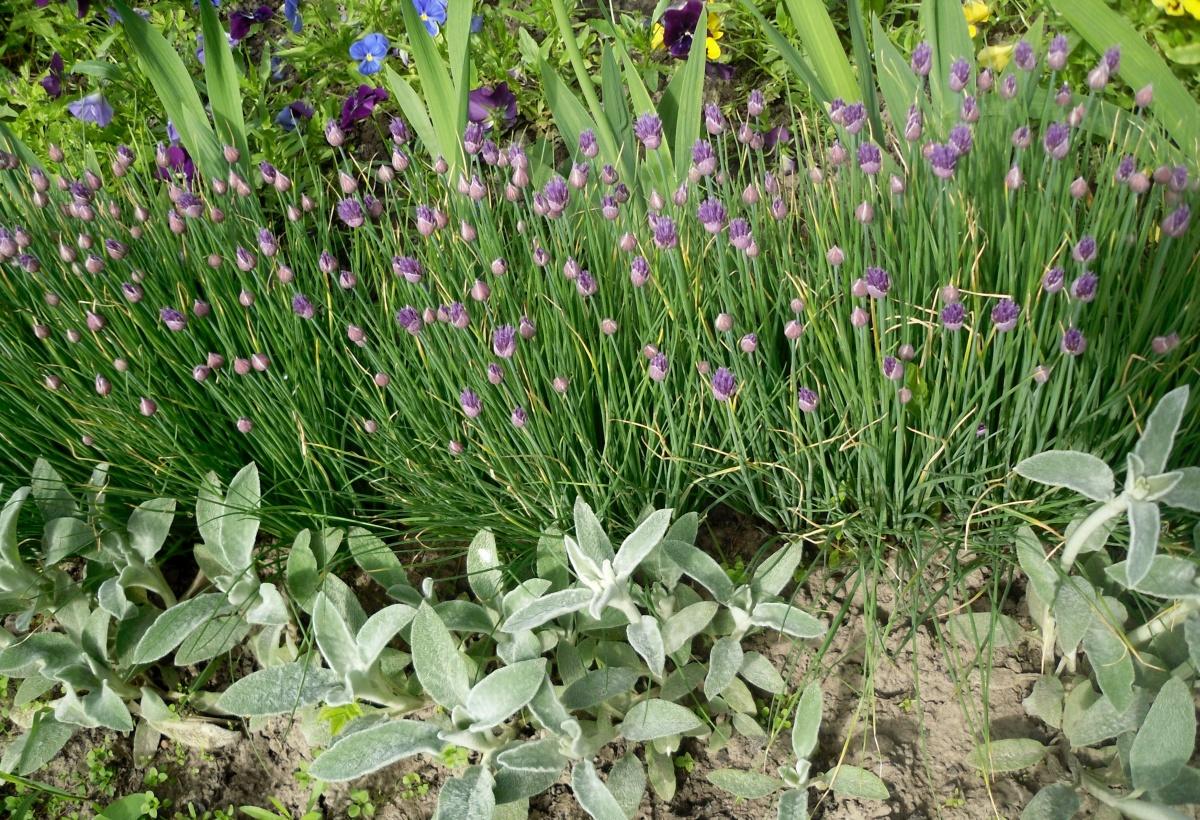
This is convenient because it grows incredibly fast. Dividing one adult bush, you can make a border two meters long or more, and just a week after planting, it cheerfully turned green.
The only drawback: at the time of flowering, the feather begins to turn yellow, fade and the onion may look ugly. But this “burn” is easy to help: it is enough to completely cut the plant, leaving no more than 5 cm (2 inch) above the surface of the soil. On this day, the first young feathers will appear, and very quickly the attractiveness of the plants will be restored.
Another great plant is Allium aflatunense. Its leaves do not even wait for the end of winter.
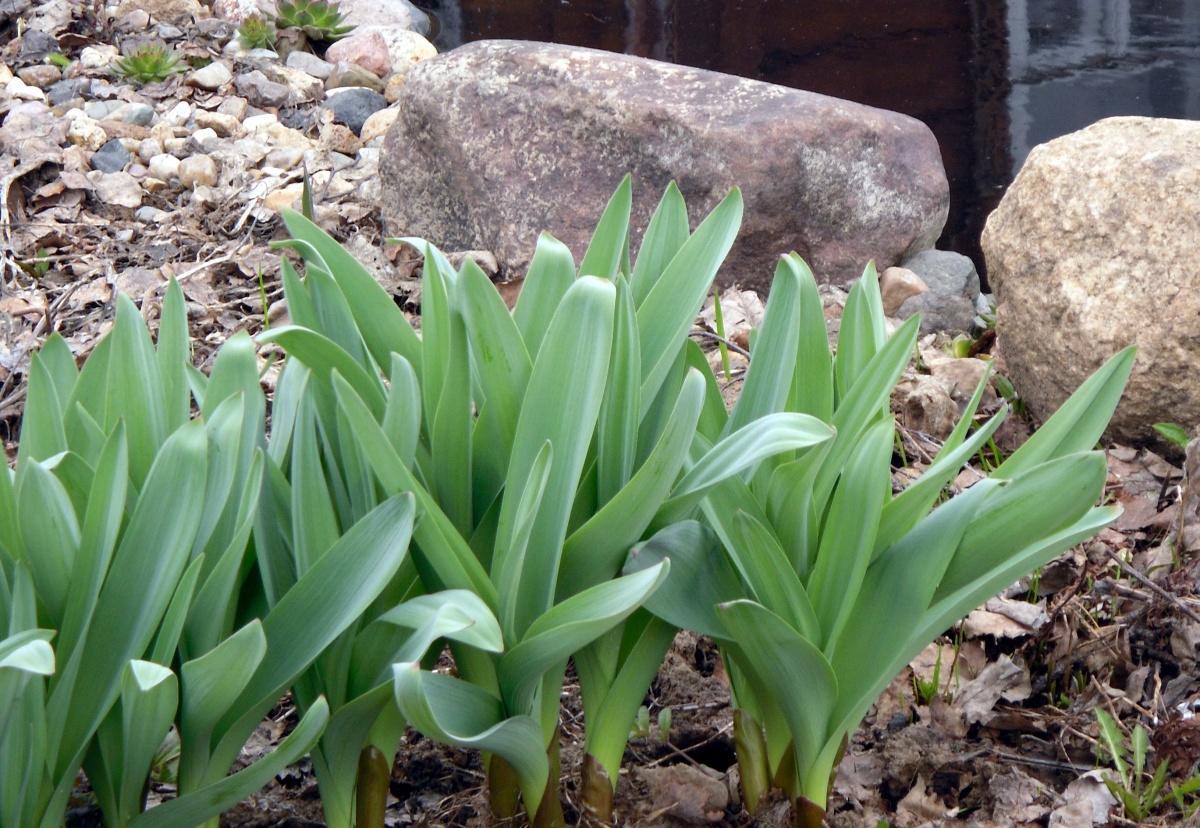
The leaves are broad, fleshy, juicy, with the aroma and taste of garlic. I like to use them in salads, especially in the spring, the body is happy with any greens, later there are high stems. The leaves are not consumed at this time, they begin to wither as soon as the flowers bloom. Therefore, it is desirable to plant such onions against the background of a flower bed or in the center (if the view is from all sides), but at the right moment their unsightliness was hidden by other plants. Although, if you regularly cut off the fading foliage is not a burden, you can leave the bush for illumination.
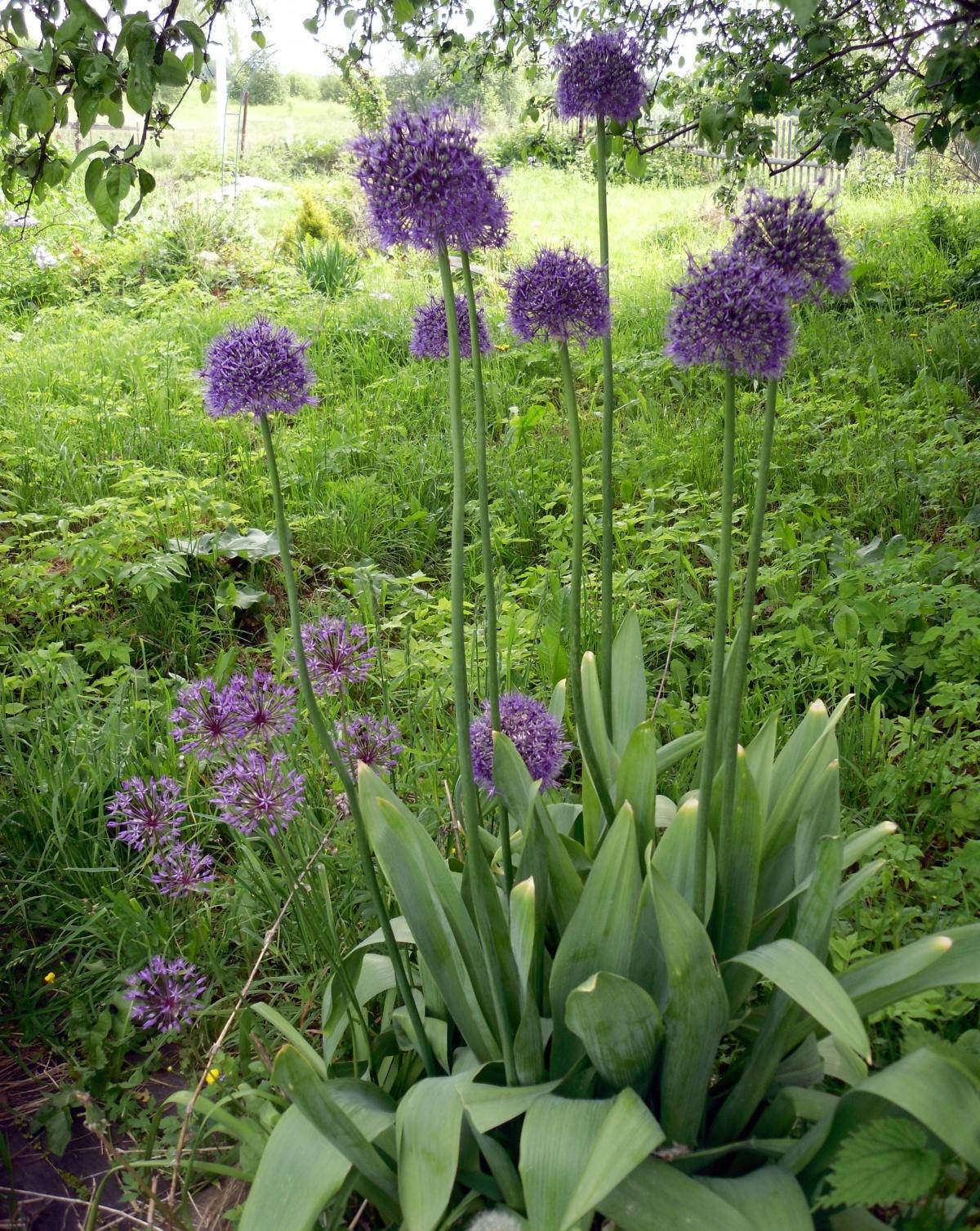
In early spring, the foliage sprouts of Allium rosenbachianum appear. These flowers are modestly peeking out from behind a powerful bush of Allium aflatunense in the photo above. And this is what it looks like in early spring.
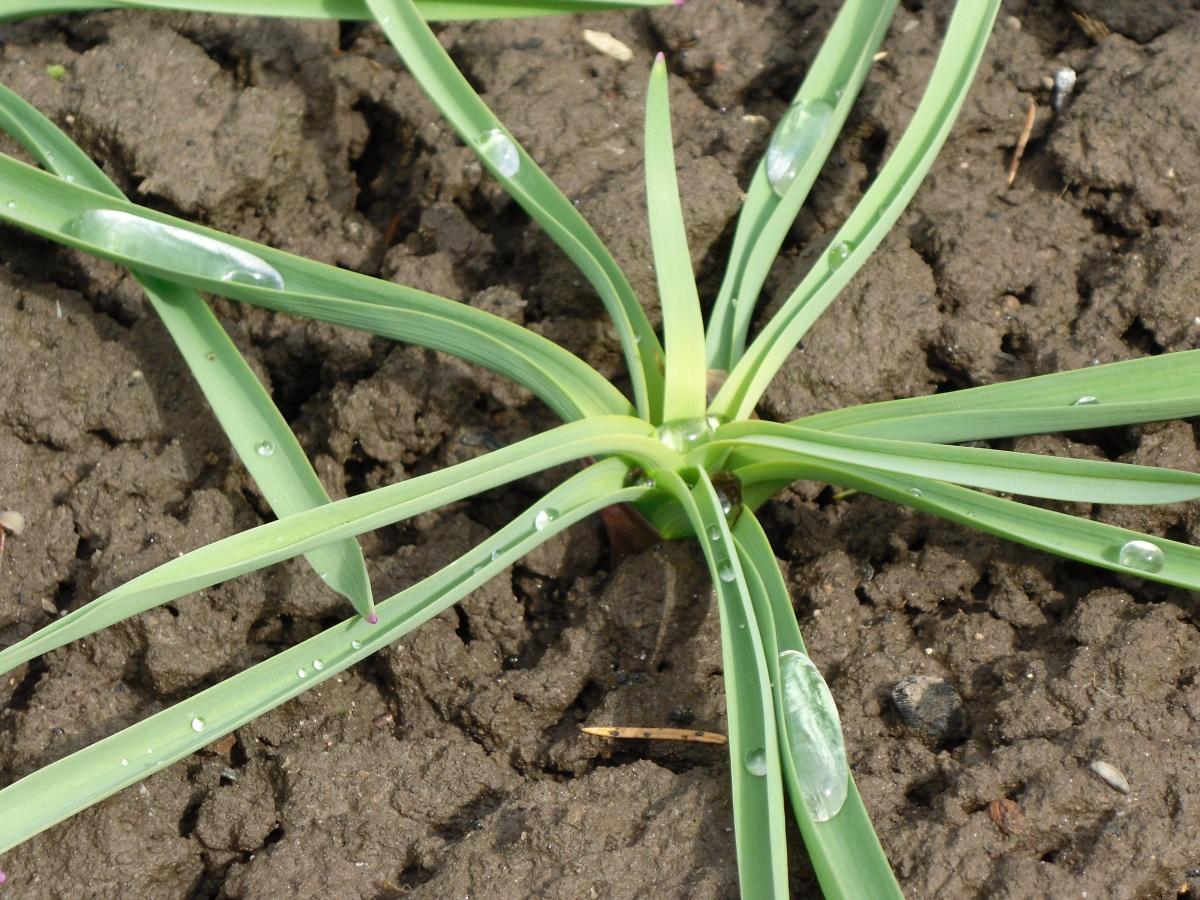
Inflorescences-balls they are very similar, differ, probably, only in size. They are good both in the garden and in bouquets, and they can be used as dried flowers.
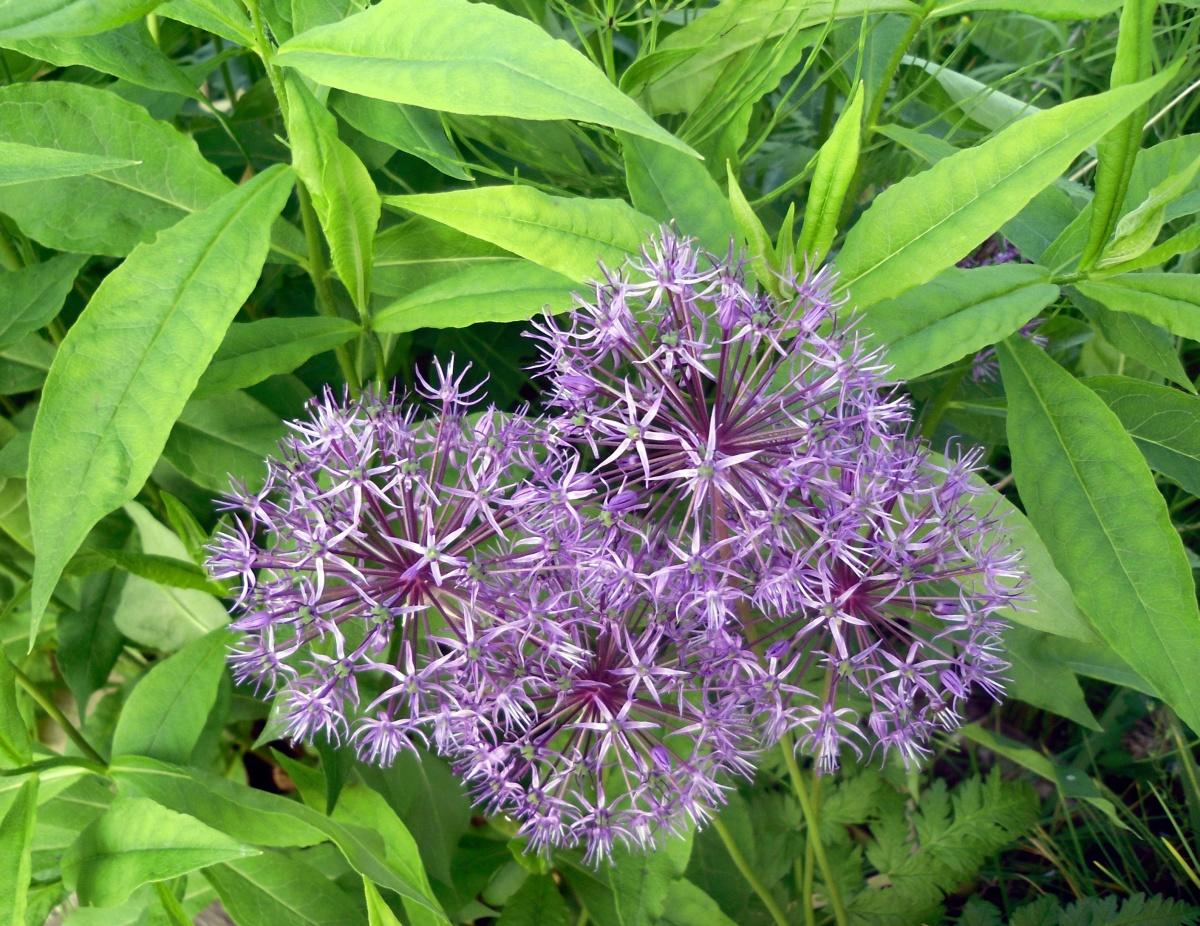
Unfortunately, the decorative effect of these bulbs is short-lived: their leaves wither in early summer, like those of tulips, daffodils and other bulbs. But Allium nutans is a stable ornamental plant.
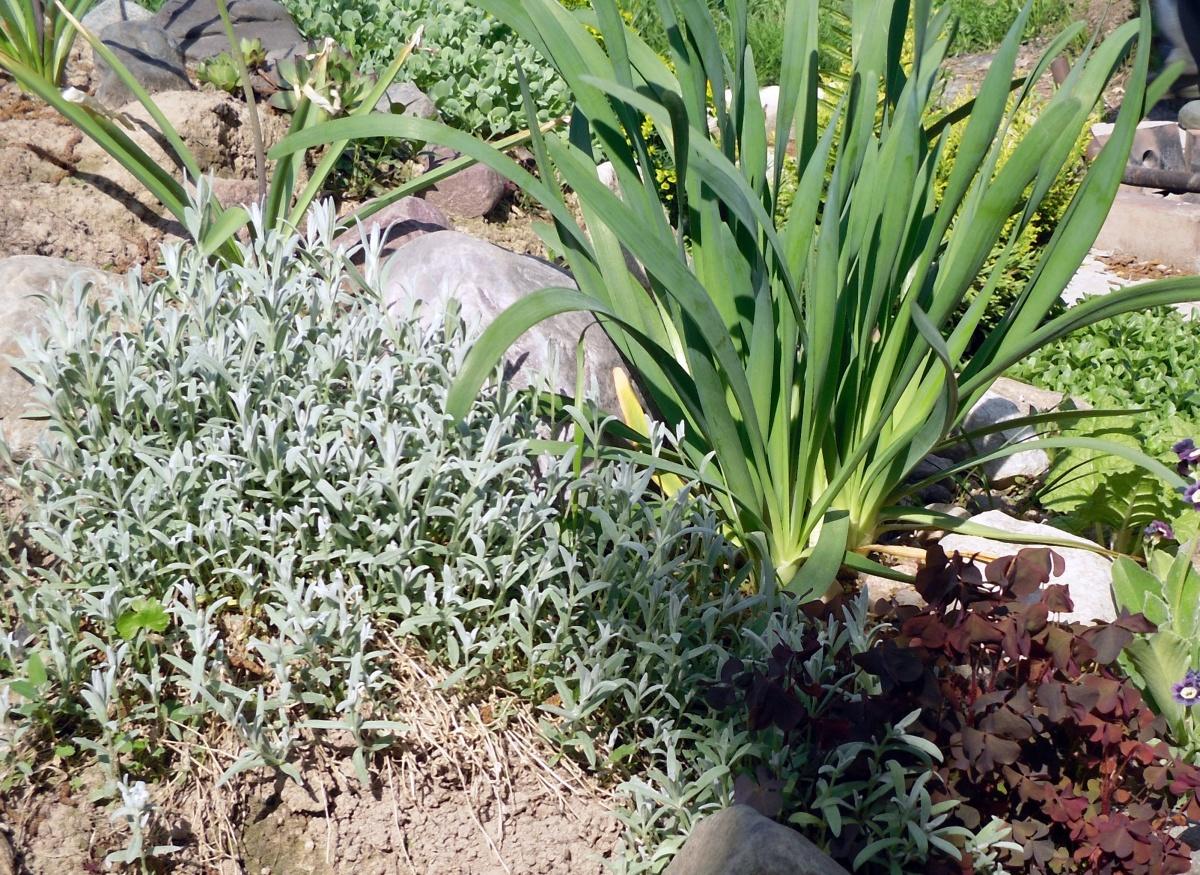
And it is also very useful: the leaves are rich in iron and vitamin C, they are recommended to use for iron deficiency anemia. And it does not irritate the stomach, and therefore it can be eaten even by those who do not use onions due to diseases of the gastrointestinal tract. Allium nutans is used in Tibetan medicine.
This plant does not form bulbs, and instead there is only a small thickening at the bottom of the stem. Its leaves were flat, juicy, and delicious; they also had a garlic flavor, like the leaves of Allium aflatunense, but unlike it, Allium nutans are not coarse. Allium nutans blooms later than other bulbs in the second half of summer.
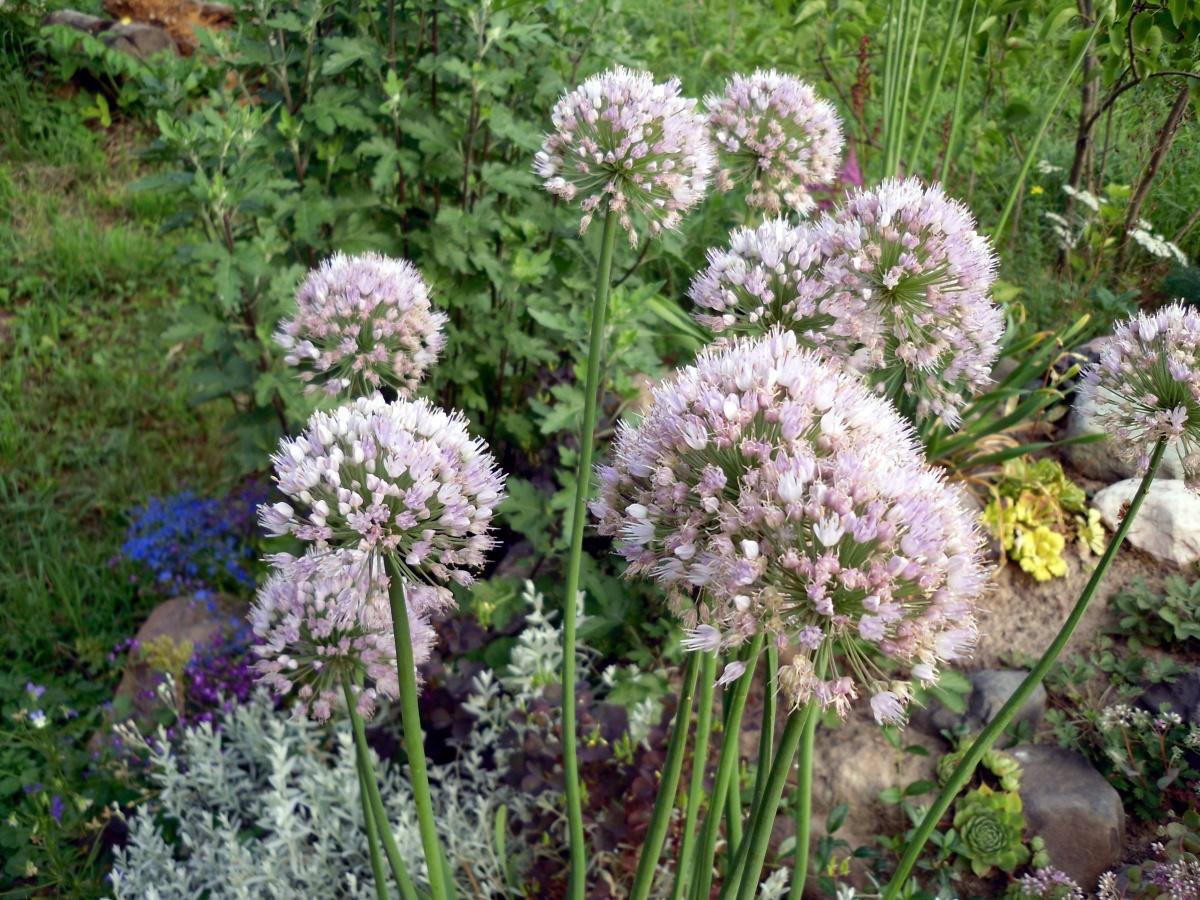
Despite the fact that the plant is quite demanding for moisture and food, I have it successfully lives on this small hill, where everything is fine with food, but there is not always enough moisture in the summer heat.
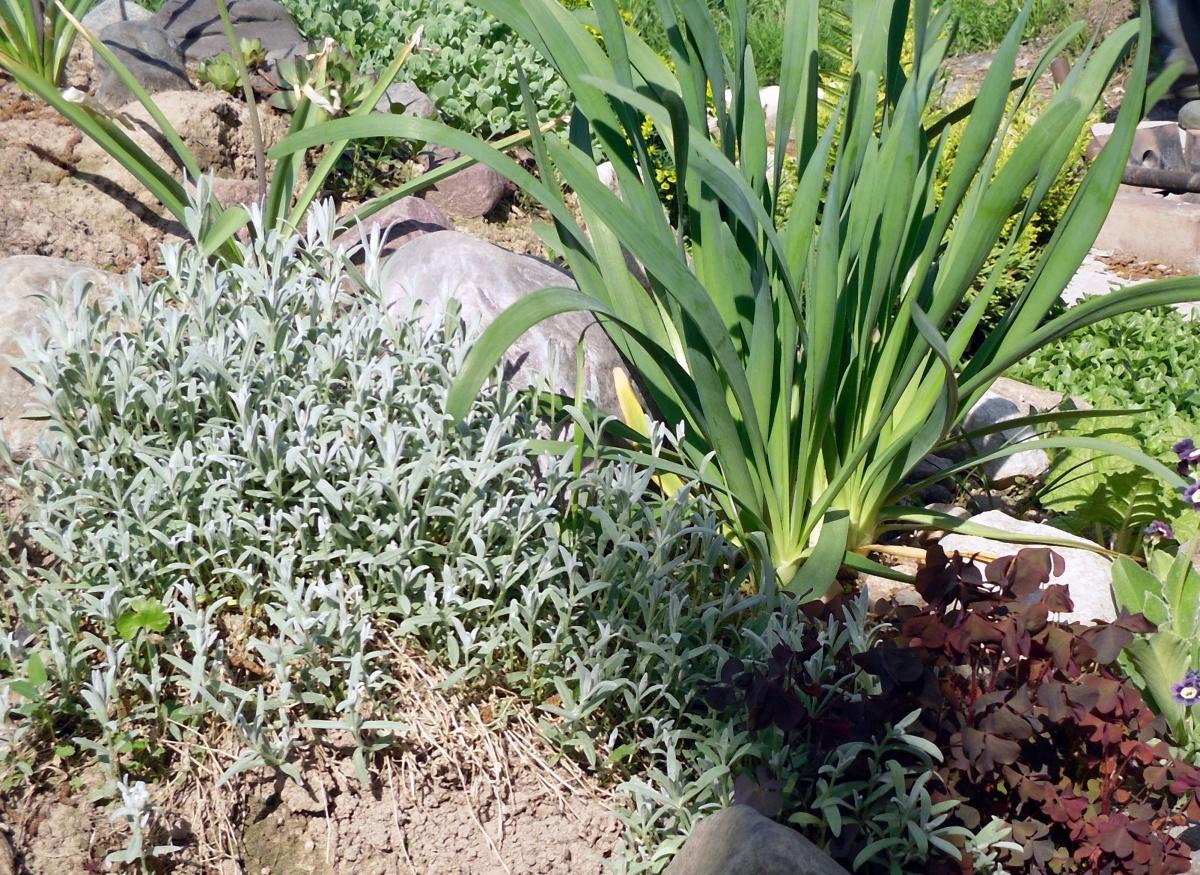
And yet it, like green onions, can be grown at home, getting greens all year round. In addition to such a beautiful, delicious and healthy onion, there are a great many decorative bulbs. For example, the undersized Allium oreophilum.
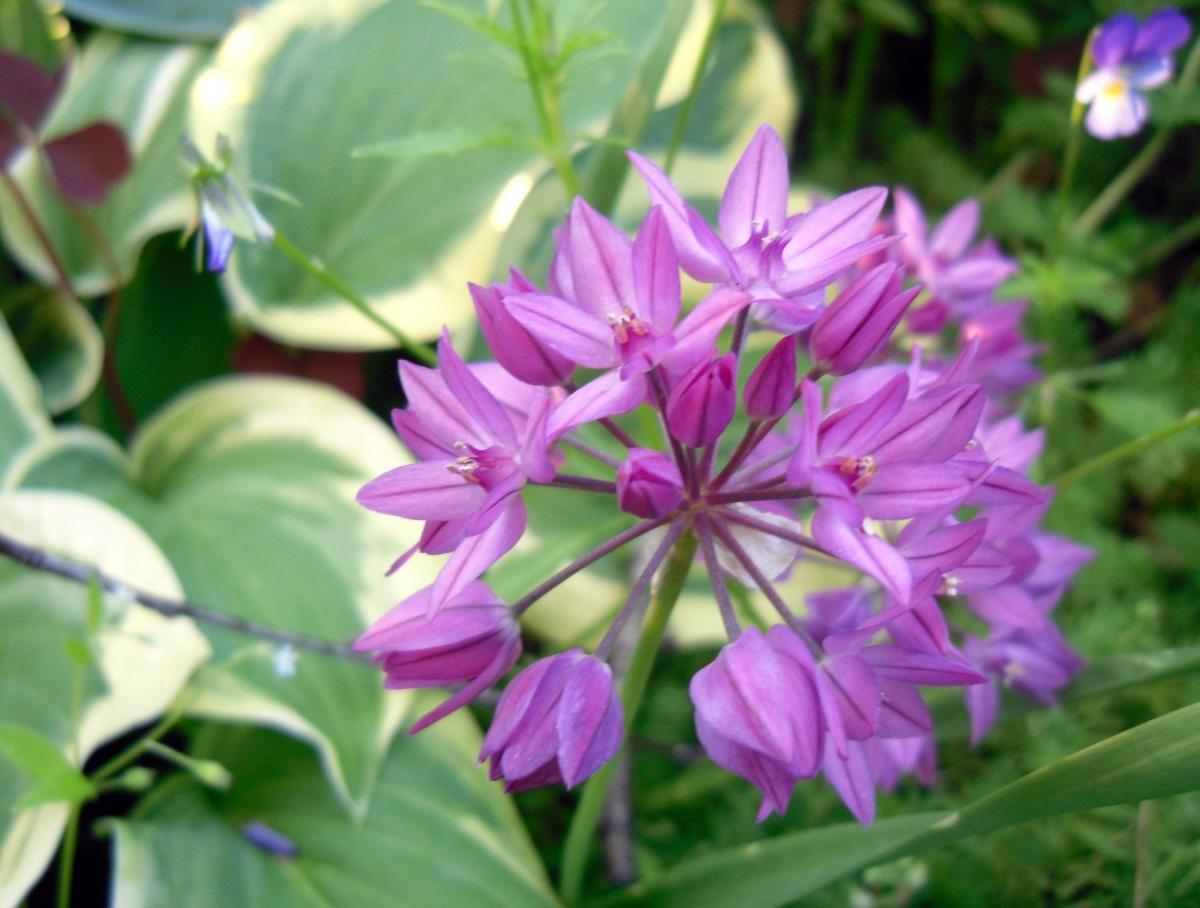
Or this Allium caeruleum.
